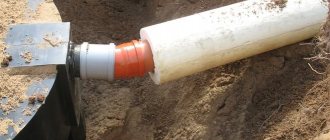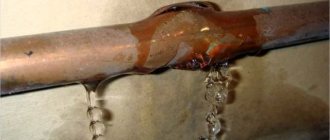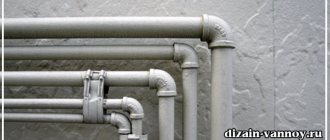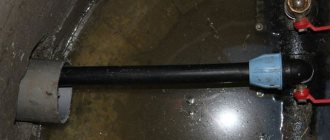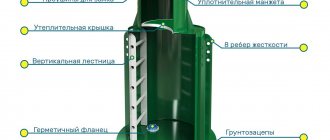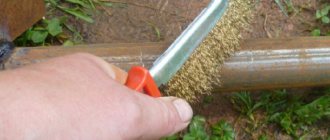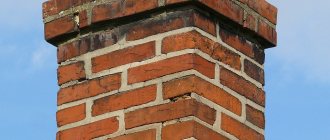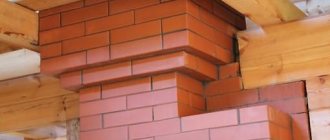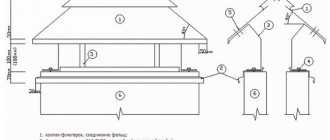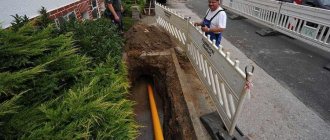How to reliably glue polypropylene at home
Polypropylene is a relatively new synthetic material. However, due to its physical and chemical characteristics, this material has a low surface tension. This factor affects the adhesion of the material to the glue and the quality of strength after it hardens. This determines how long the pipeline will last.
You can check this indicator by dropping water on the surface. If the drop does not spread and retains its shape, then the surface tension is low. Consequently, adhesion with the adhesive composition will be much worse.
This indicator can be adjusted by changing the physical characteristics of polypropylene:
- Plasma treatment in a vacuum (carried out only in industrial conditions);
- Firing with gaseous catalysts is intended specifically for preparing a plastic surface for subsequent gluing;
- Hot welding. Under the influence of high temperature, the substances of the material melt and adhere to each other. After cooling, the product is a single whole.
Glue for polypropylene pipes is necessary when you need to maintain the integrity of the product. They can glue both large and small parts.
Glue for polypropylene pipes is necessary when you need to maintain the integrity of the product.
Repairing polypropylene pipes using glue
Elimination of leaks in polypropylene pipelines is carried out in the following ways:
- Installation of a detachable clamp clamp without necessarily turning off and draining the water.
- Adhesive patch made of polypropylene with complete disconnection and emptying of the repaired area (the repair area is thoroughly cleaned, dried, the patch is fixed with a bandage).
- Replacement of a damaged section of pipeline or fittings with partial disassembly.
This is interesting! The pipeline assembled with a thermoplastic adhesive composition is most repairable, because The connections can be easily disassembled when heated with a hairdryer. Defective pipeline components, the connecting sockets of which are fixed with thermosetting adhesives, have to be completely cut out.
Let's consider the option of replacing the damaged section of the pipe with partial disassembly. Work when using a thermosetting composition is performed in the following sequence:
- Determining the location of the accident and the scope of work.
- Preparation of necessary materials and tools.
- Shutting off and releasing water from the pipeline.
- Dismantling the defective section of the pipe using a hacksaw or angle grinder.
- Removing burrs and aligning the ends at the free ends of the pipeline
- Cleaning and degreasing of landing spots on pipelines and from one of the sockets on two branches.
- Applying adhesive composition to prepared surfaces.
- Installation and fixation of bends in one plane.
- Manufacturing a U-shaped pipeline from two branches with a center-to-center distance between the nozzles equal to the same on the pipeline being repaired (assembled with glue in compliance with all the above measures).
- Connection of free sockets of branches of the repaired pipeline with a U-shaped compensator with fixation with glue.
- Removing excess glue.
We recommend that you read: Polypropylene pipes for heating systems
Types of adhesives for polypropylene
For adhesion of parts, specialized glue of several typologies has been developed. This is due to the components, fillers and other substances that make up its physical properties and interaction with plastic; glue is usually divided into several subgroups.
In addition, they are divided according to the presence of a hardener:
- With one component;
- With two.
The first type is sold in a form that does not require pre-mixing (Moment adhesive for polypropylene). In two-component compositions, the auxiliary hardener does not react with the active substances at the very beginning. They are mixed immediately before gluing. Therefore, even undiluted, they will last much longer.
For adhesion of parts, specialized glue of several typologies has been developed.
Thermoset
This type of adhesive for polypropylene pipes contains various resins. When the temperature rises or when interacting with special amplifiers, the glue hardens very quickly and irrevocably. Aerobic compounds fall into this category. Thermosetting glue is not afraid of high and low temperatures and mechanical stress.
Thermosetting glue is not afraid of high and low temperatures and mechanical stress.
Thermoplastic
How to glue polypropylene if it has an uneven surface? Thermoplastic composition. This material is based on rubber mixtures and various resins. Due to its peculiarity, namely, melting and spreading under the influence of elevated temperatures, thermoplastic adhesive is optimal for working with surfaces that have errors. In the molten state, the glue fills all microcracks, and after lowering the temperature (hardening) it hardens.
The glue is chosen based on certain points. The characteristics of the composition are taken into account: strength, resistance to thermal effects, elasticity, service life. You should also take into account immunity to sunlight, adhesion to surfaces, setting time, application methods, texture after drying, polymerization.
Thermoplastic adhesive is optimal for working with surfaces that have errors.
How to choose glue for installing PVC pipes
When choosing an adhesive composition for gluing PVC pipes, you need, in particular, to read the instructions supplied with them. This will allow you to learn more about the material from which they are made.
Moreover, when choosing, you should also take into account the following parameters:
- Applicable welding type . That is, you need to decide whether it will be cold or hot.
- Hardening time . In principle, we can assume that for cold welding this time is 4 minutes if this occurs at room temperature. If the temperature exceeds 40°C, the time becomes shorter and is 1 minute. When hot welding, the time indicators are: hardening - about 30 minutes; hardening – 2.5 hours; complete polymerization – 24 hours.
- Procedure for use and storage features . In order for the adhesive to maintain its effectiveness, these conditions must be strictly observed. Which, as a rule, is indicated on the glue packaging.
Moreover, other characteristics of the adhesive composition can be found on the packaging. These are, for example, the density, color and viscosity that this glue has.
However, as you know, PVC pipes vary in their rigidity. Therefore, based on this fact, some manufacturers divide adhesives into certain varieties. But, as a rule, there are only two types:
- First, soft pipe glue. These include corrugated pipes, as well as water pipes;
- secondly, adhesive compositions used for assembling solid products. These are, for example, siphons and plastic fittings.
PVC fittings and pipes
Whatever type of glue it is, it is resistant to water. Moreover, the water can be cold or hot. Therefore, in principle, when choosing glue, you should not worry about this point. However, preference should be given to products from well-known manufacturers. That is, those who fully guarantee the quality of their products.
Step-by-step procedure for gluing elements
Before you start gluing polypropylene, study the instructions. As a rule, recommendations and procedures, as well as compliance with proportions for two-component formulations, are indicated by the manufacturer directly on the packaging. However, there is a general principle of action:
- The surface must be cleaned and degreased, for example, with a solvent for polypropylene;
- The glue is applied in a thin layer to all surfaces that require subsequent gluing. This action is relevant unless otherwise specified by the manufacturer;
- Fixing the parts should take at least three minutes.
After treatment, you should not move or disturb the parts in any way for a couple of hours until they are completely dry.
The glue is applied in a thin layer to all surfaces that require subsequent gluing.
How to properly glue polypropylene pipes together
The question is not only how to fasten polypropylene, but also how to do it. The work is specific and requires certain tools:
- Device for cutting plastic pipes;
- Sandpaper;
- Glue gun;
- Directly the glue itself;
- Brush with natural bristles.
How to do:
- First you need to cut the pipes to the appropriate size.
- Using sandpaper, clean the cut areas, removing roughness and burrs.
- Make notes.
- Degrease the surface.
- Apply glue. If the sealant for propylene is packaged in a tube, it is applied using a glue gun. In the jar, glue is applied with a brush.
- Then connect the parts after maintaining the specified time.
- Remove excess substance using a regular napkin.
The quality of gluing is checked after 24 hours. Craftsmen additionally install rubber or wire clamps. In plumbing structures, after this time it is already possible to run water under pressure for testing. It is not uncommon for subsequent defects to appear in the work. This may be caused by a slow pace of work, uneven gluing, or distortions in the process. It is important to follow the manufacturer's direct timing instructions.
The quality of gluing is checked after 24 hours.
How to glue polypropylene
Before you begin installation of polypropylene pipelines, you must do the following:
- Determine the need for materials necessary for the work;
- Purchase and deliver them;
- Prepare the necessary tools (pipe cutter, files, hacksaw, grinder, paint brushes, sandpaper, hammer drill, screwdriver, screwdrivers, hammer, tape measure, marker), as well as personal protective equipment (gloves, goggles, respirator);
- Prepare the workplace (provide comfortable and safe working conditions).
We recommend that you read: What are reinforced polypropylene pipes?
After completing these activities, proceed directly to installation in the following order:
- Marking pipes according to required dimensions.
- Cutting according to the markings made.
- Cleaning of burrs and contamination from the ends and seats of connected pipelines.
- Assembling the pipeline “dry” and marking the fitting dimensions for fitting couplings.
- Degreasing the surfaces to be joined with solvent or acetone.
- Applying glue in an even thin layer with a brush or gun (depending on the type and consistency of the selected glue).
- Assemble the pipeline parts in the required sequence according to the marks with mandatory fixation for 20 seconds.
- Removing excess glue.
- Fastening the assembled pipeline to building structures using brackets and clamps (moving glued pipeline units is allowed no earlier than 20 minutes).
- After 24 hours, perform a hydraulic test of the pipeline.
